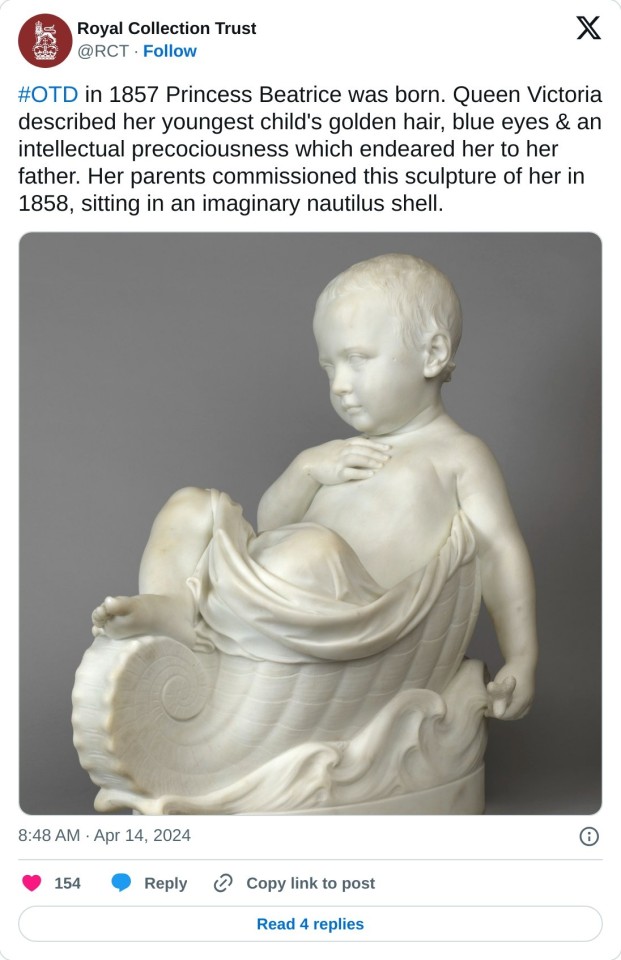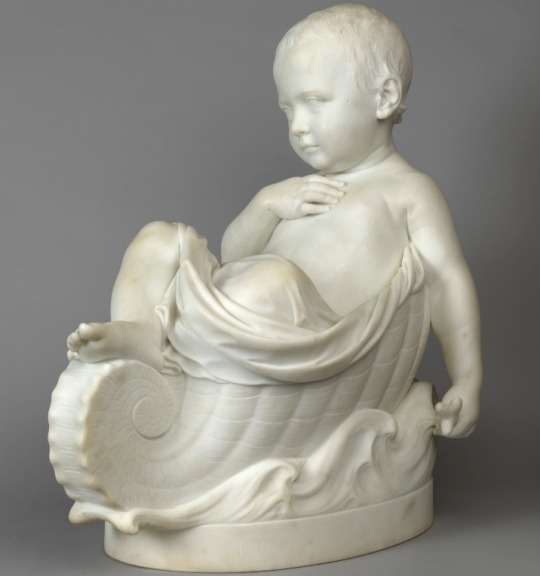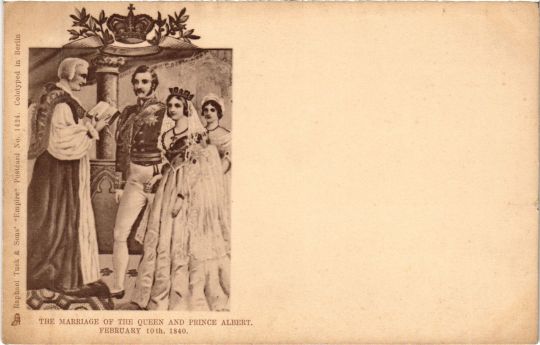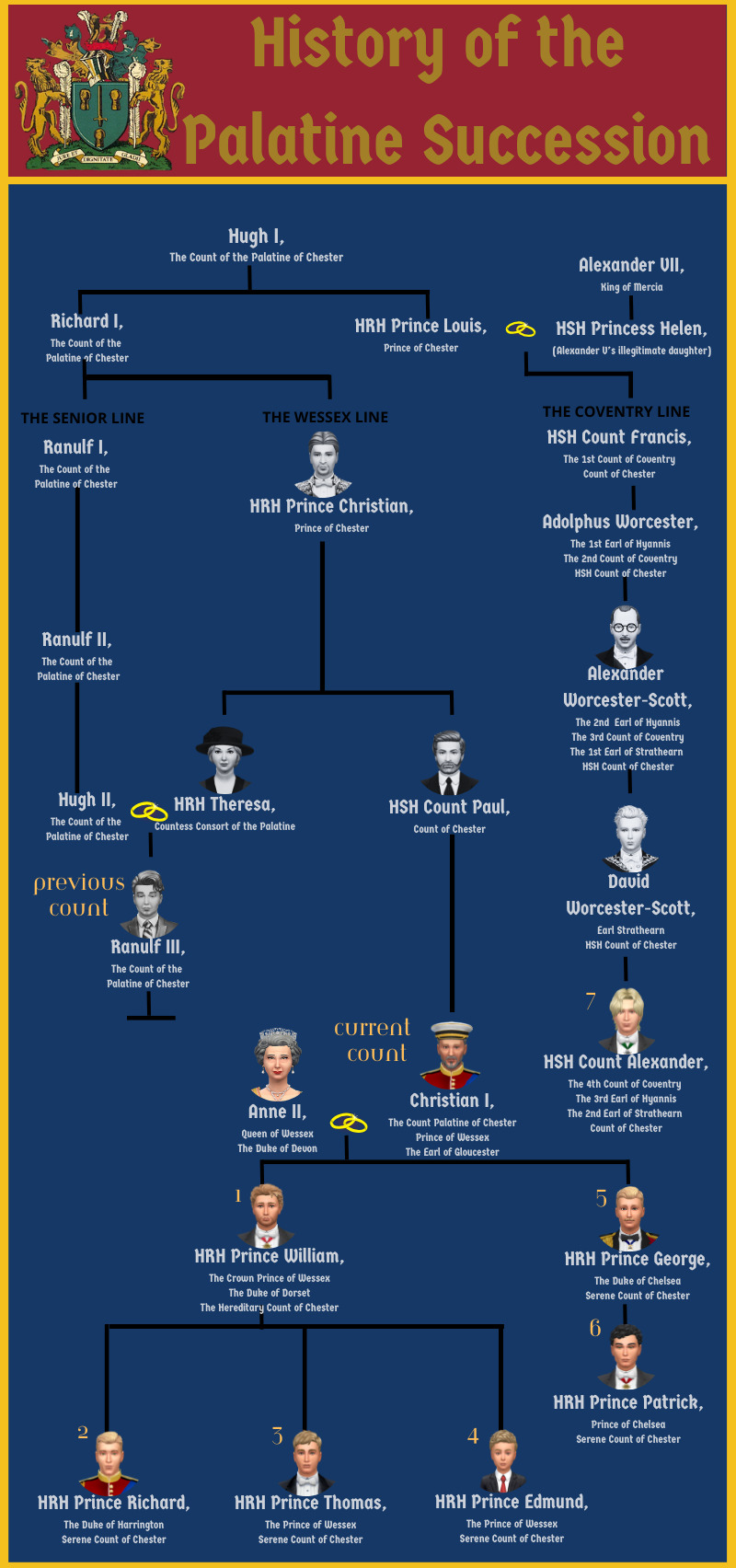#albert of saxe coburg and gotha
Explore tagged Tumblr posts
Text

Prince Albert. By Winterhalter.
#franz xaver winterhalter#art#portrait#albert of saxe coburg and gotha#prince consort#uk#house of hanover#german aristocracy
66 notes
·
View notes
Text

“Queen Victoria was a Slytherin, Prince Albert was Ravenclaw, Victoria, Jr. was Ravenclaw like her dad, Bertie/Edward was a Gryffindor, Alice was a Hufflepuff, Louise was a Gryffindor, Leopold was a Ravenclaw, and Beatrice was a Hufflepuff. But I’m conflicted on Alfred, Helena, and Arthur. Any ideas people?” - Submitted by Anonymous
#Queen Victoria#Prince Albert#victoria princess royal#Edward VI#Princess Alice Grand Duchess of Hesse#alfred duke of saxe coburg and gotha#princess helena of the united kingdom#Princess Louise Duchess of Argyll#prince arthur#prince leopold#princess beatrice of the united kingdom
12 notes
·
View notes
Text

Albert II, King of the Belgians between 1993 and 2013.
#kingdom of belgium#house of saxe coburg and gotha#haus wettin#king albert ii#king of the belgians#Prince of Liège#Prince de Liège#Prins van Luik#royalty
7 notes
·
View notes
Text

Victoria, Empress of Germany and Queen of Prussia by John Brandard, printed by M & N Hanhart chromolithograph, circa 1856-1857
.............................................
Sheet music cover for 'the Princess Royal Polka (the Betrothed)' by Charles D'Albert.
Sitter: Victoria, Empress of Germany and Queen of Prussia (1840-1901), Consort of Frederick III, German Emperor, King of Prussia; daughter of Queen Victoria
#new post#historical fashion#victorian england#victorian era#victorian#victorian fashion#princess royal#empress victoria#princess victoria#british royal family#print#chromolithograph#19th century dress#19th century fashion#19th century#1850s#1850s dress#1850s fashion#prince albert#queen victoria#victoria princess royal#house of saxe coburg and gotha#old royals#royals#royalty#pink aesthetic#coquette#flowers#vintage print#pink
13 notes
·
View notes
Text

Leopold Charles Edward George Albert, Duke of Saxe-Coburg and Gotha Crown Prince Oscar Fredrik Wilhelm Olaf Gustaf Adolf, later King Gustaf VI Adolf of Sweden Princess Sibylle Calma Marie Alice Bathildis Feodora of Saxe-Coburg and Gotha, Duchess of Västerbotten Prince Gustaf Adolf Oscar Fredrik Arthur Edmund, Duke of Västerbotten Crown Princess Louise Alexandra Marie Irene Mountbatten, later Queen consort of Sweden Princess Viktoria Adelheid Helene Luise Marie Friederike of Schleswig-Holstein, Duchess consort of Saxe-Coburg and Gotha
Swedish vintage postcard
#calma#tarjeta#postkaart#sepia#saxe#duke#king#alexandra marie irene mountbatten#helene luise marie friederike#marie alice bathildis feodora#schleswig#swedish#oscar fredrik wilhelm#edward#schleswig-holstein#queen#coburg#gotha swedish#albert#friederike#viktoria adelheid#princess#ephemera#irene#adolf#crown#arthur#alexandra#fredrik#gotha
6 notes
·
View notes
Text

Fallen London’s True Identities
Alfred, Duke of Saxe-Coburg and Gotha as the Brooding Captain and the Shadow with Teeth
#fallen london#brooding captain#the shadow with teeth#fallen london’s true identites#true identities#duke of saxe-coburg and gotha#alfred duke of saxe-coburg and gotha#prince alfred ernest albert#my post#tw teeth#shuttered palace
18 notes
·
View notes
Text



Princess Beatrice VA, CI, GCVO, GBE, RRC, GCStJ (Beatrice Mary Victoria Feodore; 14 April 1857 – 26 October 1944), later Princess Henry of Battenberg, was the fifth daughter and youngest child of Queen Victoria and Prince Albert.
Beatrice was also the last of Queen Victoria's children to die, nearly 66 years after the first, her elder sister Alice.
#Queen Victoria#Prince Albert#Princess Beatrice#Princess Henry of Battenberg#British Royal Family#House of Saxe-Coburg and Gotha#House of Windsor
4 notes
·
View notes
Text
someone cast rupert friend and haley bennett in a film together pls
#the young victoria#prince albert#prince albert of saxe-coburg and gotha#queen victoria#period drama#period film#julian fellowes#my edit#edit#rupert friend#emily blunt
3 notes
·
View notes
Text

On February 10, 1840, Queen Victoria married Prince Albert of Saxe-Coburg Gotha.
After the ceremony in Chapel Royal at St James’s Palace, Victoria presented each of her twelve train-bearers (the aristocratic women who held the train of her dress) a brooch designed by Prince Albert—this eagle is one of the twelve that were presented by the new bride before the group returned to Buckingham Palace for the reception.
The jewelry house of R. & S. Garrard arranged for the brooch to be fabricated by Charles Du Vé on Maddox Street in London, based on the Prince’s design.
Each gold brooch is slightly different but features an eagle, the symbol of the House of Coburg, set with a turquoise body and outstretched wings, a diamond beak, and round ruby eyes, with pearls grasped tightly in its talons.
Each material was selected for its symbolism: turquoise blue to evoke the color of forget-me-nots, rubies as symbols of passion, diamonds representing eternity, and pearls for true love.
23 notes
·
View notes
Note
If one King is hosting another King for supper [if it matters, they're celebrating a wedding between their children], how would the seating work? It's a great big public feast, so where would the Kings, Queens, and Heirs all sit at the table? Is there some sort of specific order to it?
Usually the table would be U shaped, with the host monarch and their guests seated at the top table with people on either side. However, an example from Queen Victoria's Golden Jubilee dinner had the guests seated at different tables. You can see from the guest list that there were quite a few monarchs, heirs and consorts and ambassadors invited - from a plan in the National Archives:
Queen’s Table
The Queen The Prince of Naples Princess of Wales Grand Duke of Hesse Grand Duchess Elizabeth Feodorovna of Russia Prince Albert of Prussia, Regent of Brunswick Grand Duchess of Mecklenburg-Strelitz Grand Duke Serge of Russia Grand Duchess of Hesse Crown Prince of Siam Empress Frederic The Archduke Francis Ferdinand of Austria
Prince of Wales’s Table
Prince of Wales Princess Christian of Schleswig-Holstein Grand Duke of Mecklenburg-Strelitz Princess Frederica of Hanover The Prince of Japan Princess of Bulgaria Duc d’Auerstadt (France), Special Ambassador Princess Henry of Prussia Prince Waldemar of Denmark Duchess of Saxe-Coburg and Gotha Prince Henry of Prussia The Princess of Naples
Duke of Saxe-Coburg and Gotha’s Table
Duke of Saxe-Coburg and Gotha Duchess of Connaught Prince Rupert of Bavaria Duchess of York Duke of Oporto Princess Victoria of Wales The Hon. Whitelaw Reid, United States Special Ambassador Hereditary Princess of Saxe-Meiningen Prince Frederick Augustus, Duke of Saxony Princess Louise (Duchess of Fife) Grand Duke Cyril of Russia Princess Louise (Marchioness of Lorne)
Duke of Connaught’s Table
Duke of Connaught Duchess of Albany Duke Albert of Wurtemberg Princess Charles of Denmark Crown Prince of Montenegro Prince Charles of Ligne, Belgian Ambassador Extraordinary Duke of Sotomayor, Spanish Special Ambassador Monsignore Sumbucetti, Archbishop of Corinth, Papal Envoy Hereditary Grand Duke of Luxemburg Princess Adolphe of Schaumburg-Lippe Prince Eugene of Sweden and Norway Princess Beatrice, Princess Henry of Battenberg
Duke of York’s Table
Duke of York Princess Frederick Charles of Hesse Prince of Bulgaria Princess Louis of Battenberg Prince Alfred of Saxe-Coburg M. de Staal (Russian Ambassador) His Excellency Chang Ying Hun (China) Prince Mohammed Ali Pacha of Egypt Prince Amir Khan of Persia Princess Victoria of Schleswig-Holstein Prince Charles of Denmark Duchess of Teck
Duke of Cambridge’s Table
Duke of Cambridge Princess Feodore of Saxe-Meiningen Prince Philip of Saxe-Coburg Prince Edward of Saxe-Weimar Duke of Teck Munir Pacha (Turkish Envoy) Count van Lynden Duchess of Buccleuch (Mistress of the Robes) Prince Aribert of Anhalt Princess Hatzfeldt, Mistress of the Robes (to The Empress Frederic) Prince Frederick Charles of Hesse Princess Aribert of Anhalt
Marquis of Lorne’s Table
Marquis of Lorne Count de Casa Valencia (Spanish Ambassador) Prince Adolphus of Teck Lord Chamberlain Prince Francis of Teck Baron von Pawel Rammingen Anthopoulo Pacha (Turkish Ambassador) Prince Alexander of Teck Min Young hwan (Corean Envoy) Duke of Fife Prince Albert of Schleswig-Holstein Countess Victoria Gleichen
Prince Christian of Schleswig-Holstein’s Table
Prince Christian of Schleswig-Holstein Countess Feodore Gleichen Prince Hermann of Saxe-Weimar Count Deym (Austro-Hungarian Ambassador) Prince Louis of Battenberg Herr von Brauer M. de Courcel (French Ambassador) The Marquis of Salisbury Mr Hay, United States Ambassador General Ferero (Italian Ambassador) The Archbishop of Finland The Lord Steward Prince Christian Victor of Schleswig-Holstein Count Hatzfeldt (German Ambassador) Prince Adolphe of Schaumburg-Lippe Princess Victor of Hohenlohe
22 notes
·
View notes
Text

Prince Albert by Sir William Ross.
#uk#house of saxe coburg and gotha#prince albert#prince consort#united kingdom#art#portrait#sir william ross#royal colection#haus wettin#german aristocracy
12 notes
·
View notes
Text

Queen Victoria, 1819 - 1901. Reigned 1837 - 1901
Artist: Alfred Edward Chalon (Swiss, 1780-1860)
Date: 1838
Medium: Watercolour on paper
Collection: National Galleries of Scotland, Edinburgh, Scotland
Description
Born at Kensington Palace, the only child of the Duke of Kent and Princess Victoria of Saxe-Coburg, Queen Victoria succeeded to the throne on the death of her uncle, William IV. Not only did she become the longest reigning British monarch but she was also the figurehead of a vast empire. In 1840 she married her cousin, Albert of Saxe-Coburg and Gotha, and their happy marriage brought forth a family of nine children. After Albert’s death she largely retired from public life and spent much of her time at Balmoral in Scotland. This delicate watercolour by Chalon was the very first portrait the young queen sat for after her accession to the throne. She is dressed in the robes she wore when Parliament was dissolved after her uncle’s death, her hat casually discarded on the floor.
#portrait#watercolour#queen victoria#british monarchy#british empire#artwork#fine art#british royal family#british history#full length#seated#chair#costume#architecture#foliage#hat#courtyard#urn#necklace#swiss culture#swiss art#alfred edward chalon#swiss painter#european art#19th century painting#national galleries of scotland
28 notes
·
View notes
Text

Prince Consort Albert of Saxe Coburg and Gotha. By Kenneth Macleay.
#kenneth macleay#uk#house of hanover#prince albert#prince consort#full length portrait#german aristocracy#house of saxe coburg and gotha#full-length portrait#haus wettin#house of wettin#wettin#british#royalty
6 notes
·
View notes
Text












Milestone Monday!
Crowning Love 💒💍
On this day, February 10, 1840, Queen Victoria of the United Kingdom married Prince Albert of Saxe-Coburg and Gotha at the Chapel Royal in St. James's Palace. This marriage was significant because it united the British monarchy with the German nobility since Albert was a German prince. The two shared a deep and loving relationship, characterized by a strong partnership. Victoria was just 20 years old at the time, while Albert, her first cousin, was 21.
This royal wedding established traditions that continue to be practiced today. Departing from the previous custom of private nighttime ceremonies, Victoria wanted her subjects to witness the bridal procession, so she held hers during the day. This led to the highly publicized royal weddings we see today. She also wore a white satin dress at a time when the norm was to wear a variety of colors, ranging from red or pink to brown or black. This sparked a surge in white wedding dresses, ultimately contributing to the established tradition we see in modern weddings today.
The couple had nine children, and their offspring married into various European royal families, earning her the nickname "the grandmother of Europe." After Albert's premature death in 1861, Victoria mourned deeply and wore black for the rest of her life, contributing to her public image as a figure of mourning and loss. Their love story remains one of the most romantic in royal history.
--Melissa, Special Collections Library Assistant
The images featured come from:
The Enchanted Dolls’ House Wedding by Robyn Johnson was published in New York by Handprint Books in 2007. Our copy is a 1st American edition. This adorable pop-up book presents the fashions, customs, and traditions of weddings held in Victorian England.
The Queen’s Tact, a humorous poem written by New Zealand author and biographer Hector Bolitho, was published in London by Nicholson & Watson in 1938. It was produced by William Clowes and Sons, who were known for developing the use of steam-powered printing presses. The mounted illustration was created by British artist Steven Spurrier.

#Milestone Monday#queen victoria#prince albert#wedding#royal wedding#marriage#wedding dress#history#british royal family#british monarchy#german nobility#wedding traditions#love story#The Enchanted Dolls House Wedding#Robyn Johnson#Handprint Books#Victorian#victorian england#The Queens Tact#Hector Bolitho#Nicholson & Watson#William Clowes and Sons#Steven Spurrier
31 notes
·
View notes
Text

Wedding of Prince Albert of Saxe-Coburg and Gotha and Queen Victoria in 1940
British vintage postcard
#queen#albert#historic#photo#briefkaart#vintage#gotha#prince#british#marriage#saxe#sepia#photography#carte postale#postcard#postkarte#postal#tarjeta#coburg#ansichtskarte#old#1940#ephemera#postkaart#victoria
6 notes
·
View notes
Text


The Kingdom of Mercia (similar to the Holy Roman Empire, more so the later German Empire) is made up of various archduchies, duchies, principalities, and counties. The rulers of these territories make up the Estates General who vote for the next King of Mercia.
I briefly talked about it in a previous post, but if William were to become both King of Wessex and Count of Chester, it would mean that a King of Wessex could potentially vote for another sovereign and at the same time be subordinate to another Crown. To avoid this Queen Anne II wisely decide to have her son, Crown Prince William, and (supposedly) his three children renounce their claim to the Palatine, leaving Anne's younger son, Prince George, The Duke of Chelsea, as the prospective heir.
Obviously, this doesn't sit well with Elizabeth who wants to make sure she'll maintain some influence when Richard takes the throne. Being Mercian herself she prefers her son to become the next Count.
I took inspiration from Queen Victoria and Prince Albert's marriage and the idea of what would have happened if the couple's oldest son, Prince Edward, was allowed to inherited the Duchy of Saxe-Coburg and Gotha or what the political implications would have looked like if Victoria or Albert wanted the two realms to be united by a single Monarch.
I don't think my story will get too political (sadly), but maybe I'll do some one off story post, like this one, every so often.

Succession to the Crown Chart | Princess Royal Chart | Counsellors of the State | The Royal Dukedoms | The Earl of Gloucester | Palatine Succession
12 notes
·
View notes